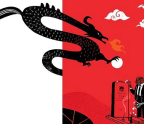
Growing up outside Philadelphia back in the 1980s, I found myself attracted to practicing meditation to attain enlightenment. When I was first exposed to Buddhism, I assumed that silent sitting meditation, with or without the single-minded contemplation of koans, was the only authentic form of Buddhist practice. Despite my aspirations and the availability of clear instructions on Zen meditation in the many books I was reading, I couldn’t bring myself to just sit down and shut up.
Then one night in Philadelphia, I was approached by a woman who handed me a card and asked if I would like to go to a Buddhist meeting. Printed on the card was what I now know as the daimoku (title), the Japanese pronunciation of a mantra derived from the title of the Lotus Sutra, “Namu Myoho Renge Kyo.” This is how I was introduced to the Nichiren Buddhist practice of chanting for buddhahood.
Since then, I’ve learned that while silent contemplative meditation may have been the practice of Shakyamuni Buddha and some groups of monastics and dedicated lay practitioners, the vast majority of Buddhists in Asia—both now and for more than two millennia—have practiced some form of chanting. For a bit of perspective on this, consider that in (recollection of a buddha), in the form of “Namu Amida Butsu,” meaning “Devotion to the Buddha of Infinite Light.” There were 11 million members of the various forms of Nichiren Buddhism who chant the daimoku and 9 million members of other schools who also chant nembutsu as well as other mantras as part of their regular practices. However, there were only about 5.3 million members of the various Zen schools whose primary practice is silent sitting meditation. In Korea, China, Vietnam, and even Tibet, the chanting of the nembutsu or other mantras, such as “Om Mani Padme Hum,” is likewise ubiquitous.






